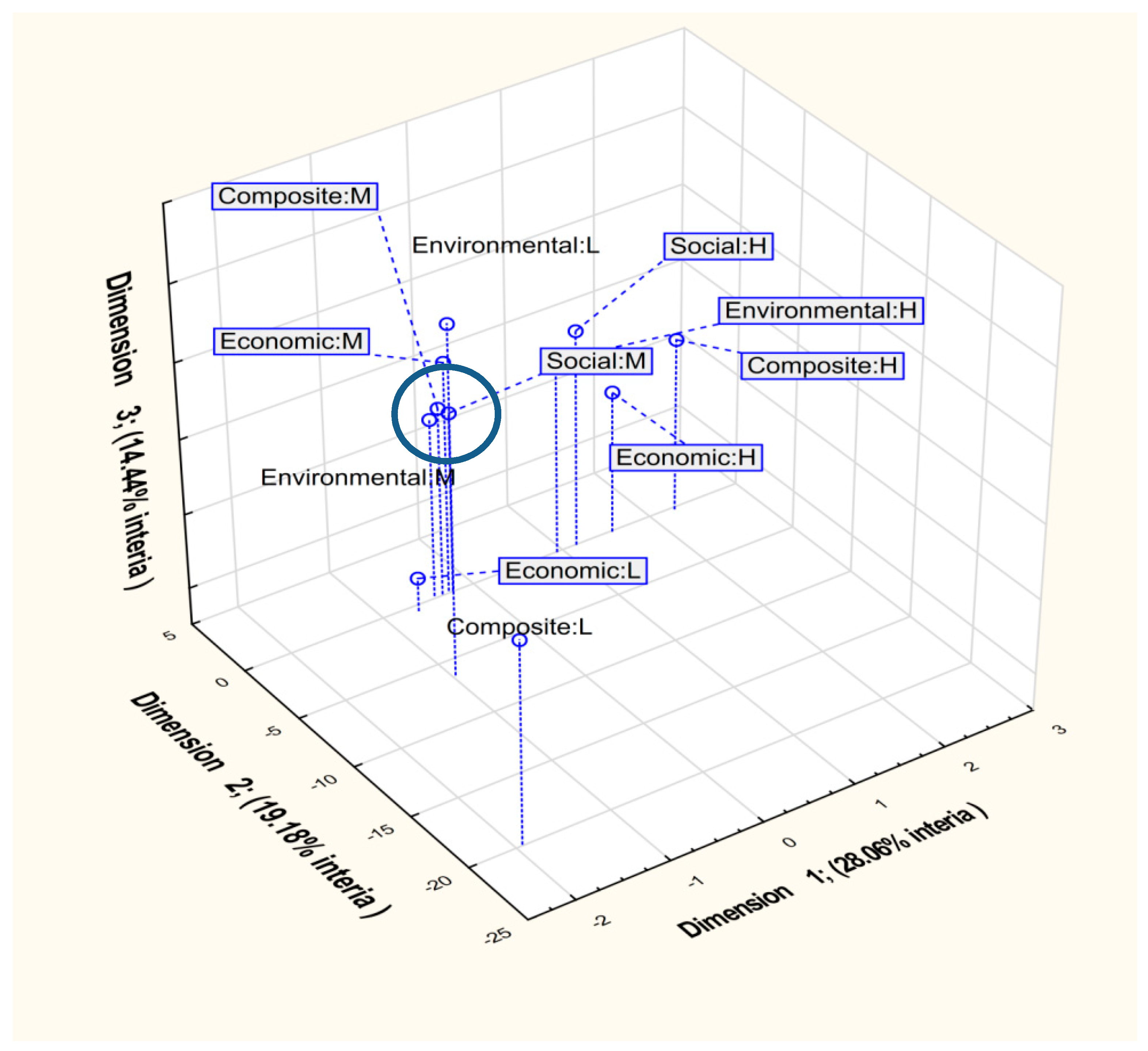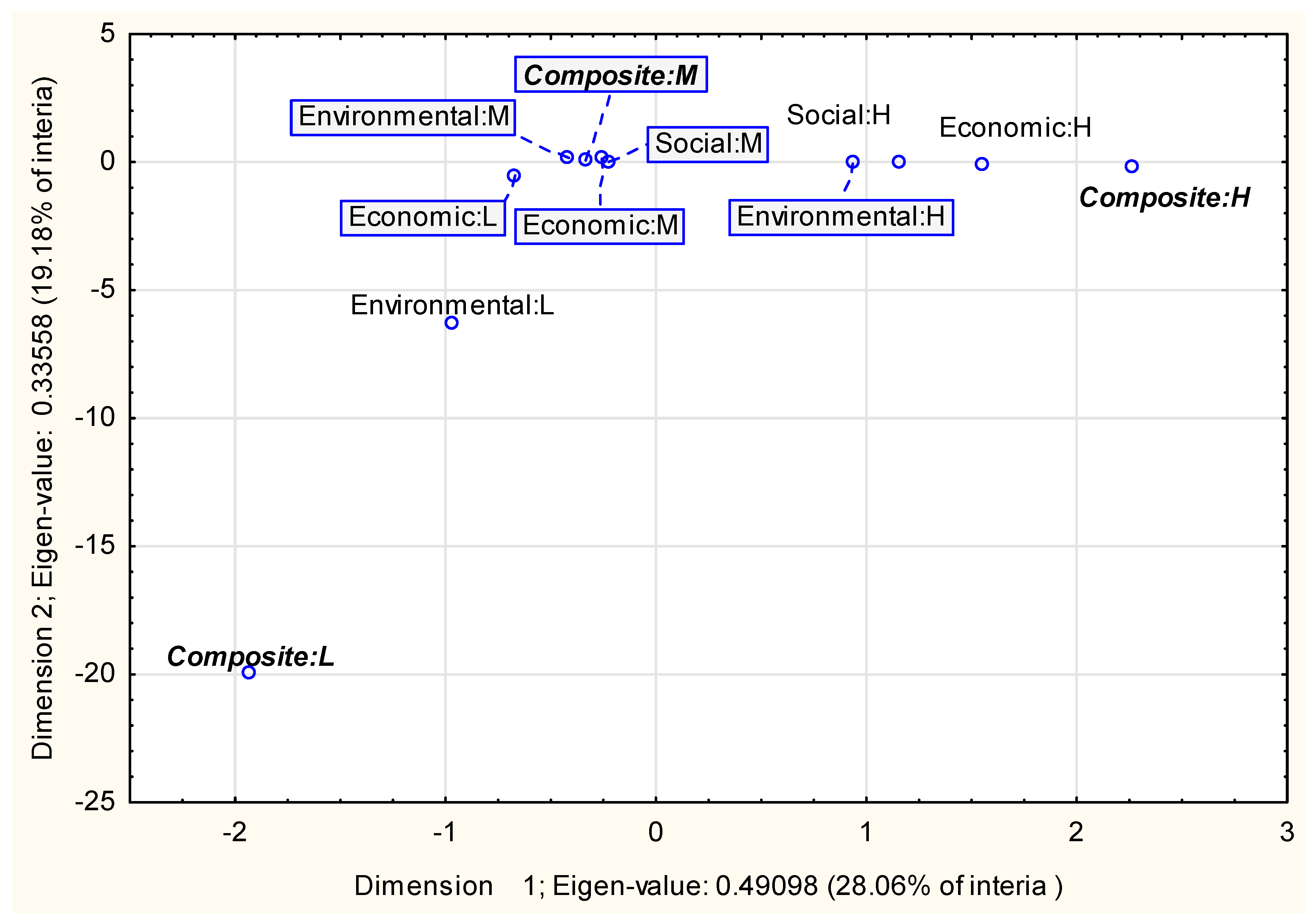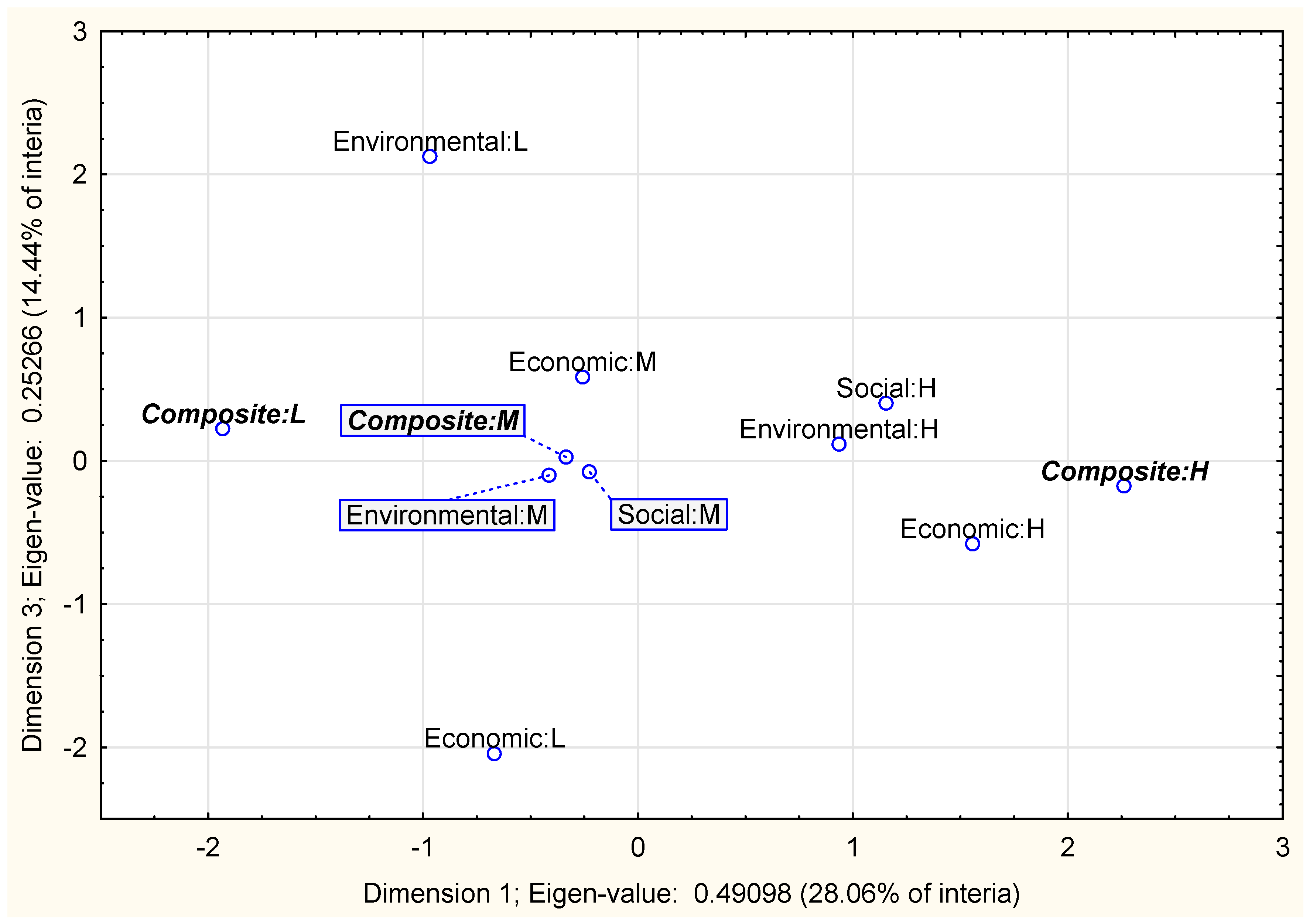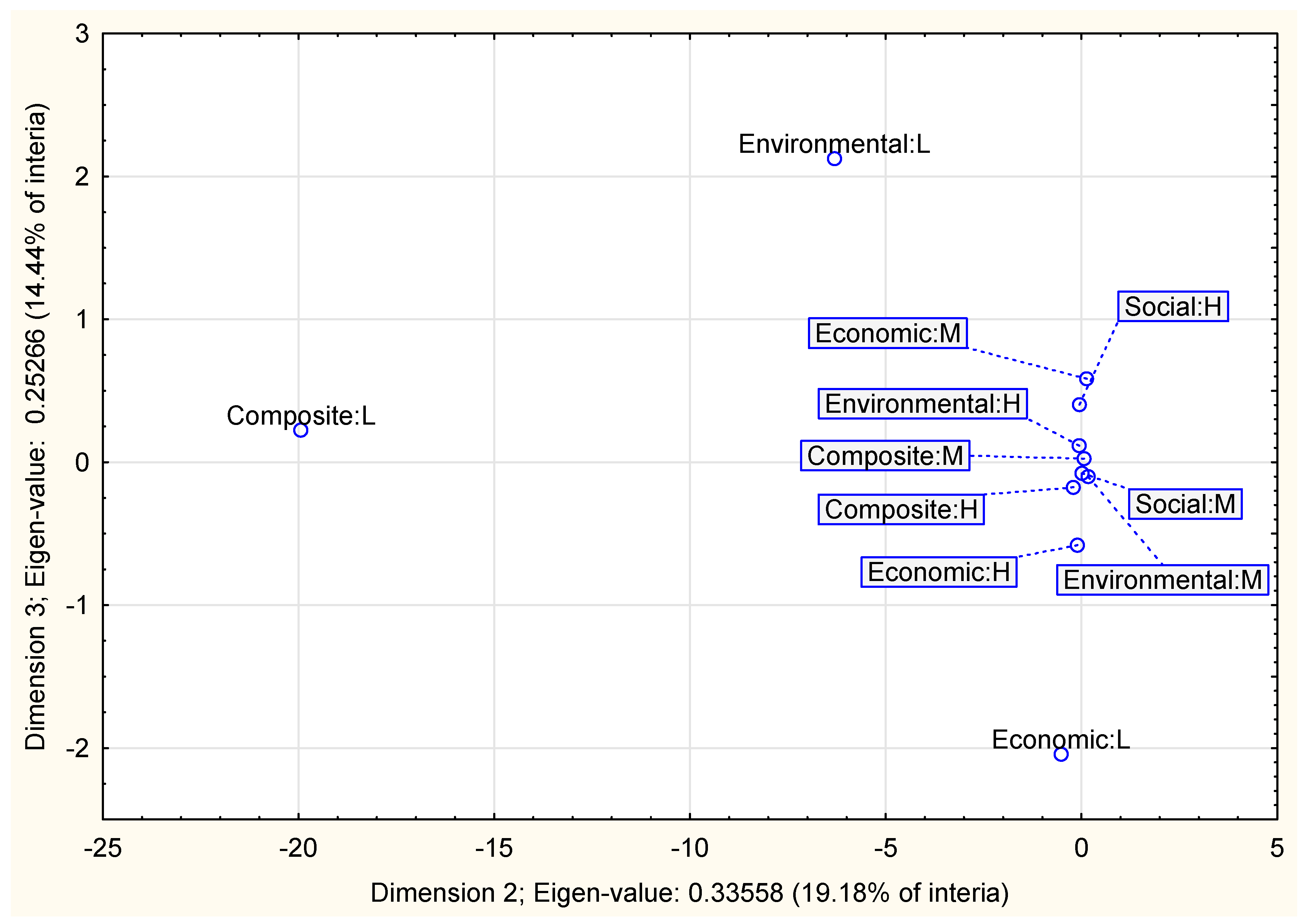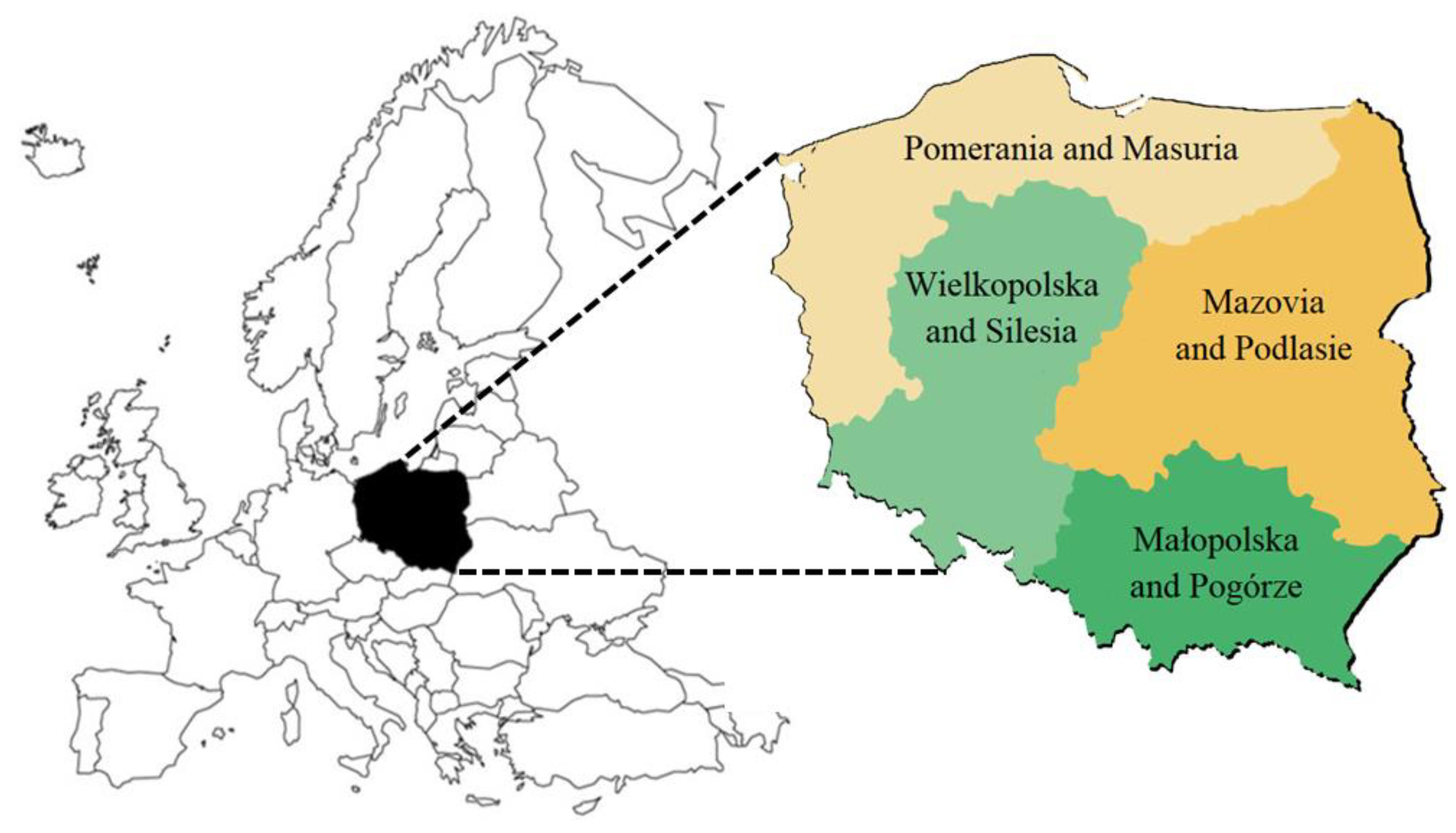2.1. Origin of the Sustainability Concept
According to Ciegis et al. [
4], in economic papers there are over 100 definitions of sustainable development, while Hayati [
8] found as many as 44 definitions of sustainable agriculture published between 1984 and 2016. Taking into consideration the number and variety of the definitions published within the last 30 years, it seems reasonable to look for the roots of sustainability and sustainable development in order to understand the principles of this idea. Although the origins of discussions on the sustainable development concept are most commonly associated with the report “Our Common Future” mentioned in the Introduction [
1,
9,
10], its history is much longer [
11,
12], especially if we refer not only to theoretical deliberations, but to practical actions as well, particularly in agriculture and forestry. The concept of keeping the land fertile for future generations and at the same time increasing the yields for present users is not new. One of the oldest concepts of such a kind was practiced in China, where the earliest records of integrated crop and livestock farming date back to 1600–800 BC [
13]. In European history there were also some practices that we can nowadays understand as referring to sustainable agriculture, such as the three-field system and (since the 17th century) four-field rotation [
14]. Concern for the soil quality most probably had more to do with caring for food security rather than with being environmentally aware, especially in the pre-industrial era when the human impact on the environment was either small or not understood.
Forestry was the first type of economic activity where people realized the impact of day-to-day actions on the environment in the long run. Probably the first formal publication describing management according to sustainability principles was a book by Hans Carl von Carlowitz (1645–1714) entitled
Sylvicultura economica [
15]. The author used the term “
nachhaltende Nutzung gebe” (ensure sustainable use), which leads us to the term “
Nachhaltigkeit” (sustainability) [
16]. As Vehkamäki [
16] (p. 3) indicates, “
the sustainability expressed in his book (…) has had the threefold meaning from the beginning: economic, social and ecological sustainability”. Almost one hundred years later (1805), a German forester, Georg Ludwig Hartig, wrote the following definition of sustainability in his “Instructions for the Taxation of Forests”: “
There will be no sustainable forest industry if lumbering in the forests is not based on sustainability. Every wise forest authority must assess the use of the state’s forest without delay and in such a way that our descendants can obtain at least as much gain from them as today’s generation does” (quoted in [
15] (p. 12)). A similar opinion was shared by Plater [
17] (p. 13), the author of the first Polish handbook of forestry; he stated that those “
who cut their forests out of measure […] do wrong to their descendants”, while
“those who use less than they would be able to do, […] deceive themselves”. Additionally, he stressed the aesthetical value of forests, affecting the wellbeing of people who walk in the nature.
Modern discussion on sustainability issues began when a book, “Spaceship Earth”, was published in 1966 by Barbara Ward. Basing on her 20-year experience of dealing with poverty in underdeveloped countries, she concluded that economic development cannot be seen separately from the problems of the natural environment. Limited resources and space were noticed also by Kenneth E. Boulding [
18] and R. Carson [
19]. A significant document, widely commented on, was the report published in 1972 by the Club of Rome ”The Limits to Growth”. It contained a catastrophic vision of decline in both population and industrial output if the economic growth paradigm continued to dominate. The concept of “sustainable development” was clearly articulated in another book by B. Ward (and R. Dubos): “
Only One Earth. The Care and Maintenance of a Small Planet” [
20,
21], published after the UN conference “
Human Environment” in 1972. Even though the conference attendants failed to conceptualize the complex relations between the natural environment and economic growth [
22], the conclusions drawn from the discussions (published by Ward and Dubos) set the directions for future actions of humankind to ensure good living conditions both for present and future generations. These materials were later used by Brundtland and her team [
1] to prepare the report that nowadays is a groundwork for most of the discussions on sustainability.
2.2. Dimensions of Sustainability
Even though the essence of the sustainability concept is clear enough [
4], researchers use many different sustainability definitions and interpretations [
23,
24,
25,
26]. It can be assumed that the variety of approaches is the result of the universality of the concept [
27,
28,
29]. Despite their variability, most of the definitions cover three types of goals, interpreted as the dimensions of sustainability: environmental, economic, and social [
2,
25,
30]. In practice, sustainable development requires such actions that are economically viable, ecologically sound and socially acceptable. However, most authors concentrate on the way humankind uses natural resources [
31]. There are also some publications concentrating on ethical aspects of the problem [
32]. Many publications suggest widening the perspective in order to cover more dimensions than just social, economic, and environmental dimensions. It is quite popular to add an institutional component [
33,
34,
35]. Some authors go a step further, covering more than four dimensions—for instance Seghezzo [
36] suggested using five dimensions: “place” understood in terms of nature, culture and politics, and additionally “permanence” and “persons”. On the other hand, Mauerhofer [
37] presented a completely different approach: a ”3-D Sustainability”. He described a three-dimensional cone consisting of three types of capital (natural, social and economic) and three types of capacity (environmental, social, economic), while the cone’s diagonal sides represent the limits of the environmental system. The attempts to widen the classical three-dimensional understanding of sustainability can be understood as a search for a more practical approach to the concept, because the realization of sustainable development remains highly problematic [
4,
38]. Nevertheless, all of the sustainability dimensions are relatively rarely interpreted as a system, and not merely as a set of indicators. This issue is addressed in the next part of the paper.
2.3. Integrating Economic, Social, and Environmental Dimensions
Integration of economic, social, and environmental dimensions is crucial to achieving sustainable development [
39]. According to Voinov and Smith [
31], this approach is important, because a long-term development of one subsystem is somewhat dependent on the others. According to them, economic and ecological components should be considered together, including their interplay, because finally they constitute one system. A similar view is represented by Ciegis et al. [
4], Jiliberto [
40] and Bardy et al. [
35] (after Kahuthu [
41]). Sadok et al. [
42] (p. 163) point to a similar problem, highlighting that in order to assess sustainability in a realistic way, we need “
the integration of diverse information concerning economic, social and environmental objectives; and the handling of conflicting aspects of these objectives as a function of the views and opinions of the individuals involved in the assessment process”. The need for integrated perception of sustainability was also indicated by Saifi and Drake [
43], who—referring to Norgaard’s [
44] “
Development Betrayed”—emphasized the dynamic nature of this phenomenon. According to these authors [
43] (p. 24), “
the challenge of agricultural sustainability can be fruitfully addressed within an analytical framework that consciously and explicitly considers agricultural development as consisting of processes of coevolution involving agriculture and the surrounding ecological and socioeconomic systems”.
The relevance of studying relationships between various dimensions of sustainable development is also indicated by Pierantoni [
45], although she notes that sustainability can be defined in relation to only one dimension (environmental or social). However, in such a case the interpretation of sustainability focuses on impact analysis, which is useful mostly for analyzing short periods. This view is shared by Ciegis et al. [
4] (p. 33), who indicate that in a one-dimensional analysis “
sustainability only involves specific problems in a certain dimension, and hence relationships with development in other fields may be very weak”.
The discussion on the choice of sustainability dimensions is closely linked with the concepts of “strong” and “weak” sustainability [
46,
47,
48]. If realizing the sustainability concept in practice means leaving for the future generations the same amount of capital as we possess now, the question is: should we count all the types of capital (
natural, man-made and
human) together or each of them separately? Those who claim that the types of capital are substitutable allow the calculation of all of them jointly. This approach is labelled “weak sustainability”, while “strong sustainability” is based on an assumption that types of capital are not substitutable but complementary and, thus, should be calculated separately [
46,
48,
49]. In practice it would mean that non-renewable resources shouldn’t be used for production processes at all. This approach can be tempting when we want to save the natural environment, but in practice it is very difficult to follow, especially if we also take into account social issues (increase of the well-being of people) [
48,
49]. The most important thing is to identify the critical natural capital, that is, the resources which perform irreplaceable functions [
50].
Agriculture makes use of such non-renewable resources as the soil and its ecosystem. Nevertheless, sustainable agriculture can follow not only “weak”, but also “strong” sustainability rules. The key issue is to define the critical natural capital that has to be passed to the future generations as a legacy. Such a legacy is, without doubt, the soil; even though it exists for centuries, it can be made unfertile through improper farming practices. As a consequence, the assessment of agricultural systems in terms of sustainability is, in practice, done as the assessment of agricultural practices’ correctness. It should be also noted that the dichotomy of “strong” and “weak” sustainability is not the only existing approach, as for example, Turner et al. [
51] suggested using four different sustainability levels, depending on the level of realizing social and economic goals.
2.4. Measuring Sustainability of Agriculture (Branch and Farm Level)
Agriculture plays an important role in sustainability issues [
52,
53]. Despite the variety of definitions used by researchers, there are some common features of what we call ”sustainable agriculture”. According to the mainstream approach, it is based on three basic rules: “ecological soundness” (which refers to the preservation and improvement of the natural environment); “economic viability” (which refers to maintenance of yields and productivity of crops and livestock); and “social acceptability”, which refers to self-reliance, equality and improved quality of life [
54,
55,
56,
57]. Some researchers widen this three-dimensional concept. For instance, Rasure ([
58] after [
8] (p. 19)), while describing multi-dimensional aspects of sustainability, indicated 13 dimensions of sustainable agriculture, such as “
technological appropriateness, economic feasibility, economic viability, environmental soundness, temporal stability, efficiency of resource use, local adaptability, social acceptability, political acceptability, administrative manageability, cultural desirability, equity and productivity”.
Empirical research of sustainability is most often based on indicators that are supposed to reflect the level of compliance of the observed parameter with the sustainability paradigm [
59,
60]. However, we should not forget that these indicators are not perfect [
59,
61]. The assessment of sustainability is very difficult because of its dynamic character [
62]; this refers to measuring sustainability in agriculture, as well. A broad set of indicators referring to both sustainable development in general and sustainable agriculture specifically can be found, among others, in publications of the following authors: Briassoulis [
63], UN [
64], Hayati [
8], Reytar et al. [
65], Hayati et al. [
66], Latruffe et al. [
60], and Majewski [
3]. Ideally, the indicators should cover subsystems such as the farm field (where agronomic factors are paramount), the farm unit (where microeconomic concerns are primary), the regional physical environment (where ecological factors are central), and national as well as international economies (where macroeconomic issues are the most important) [
67].
Briassoulis [
63] stresses that the bulk of the indicators used by researchers refer to a single dimension of sustainable development. Many of the papers concentrate on the agro-ecological component of the sustainability (e.g., [
3,
8,
68,
69,
70,
71,
72]). The agro-ecological component is most often measured by the assessment of soil erosion, soil quality, water quality, quality of agricultural practice, use of fertilizers, use of pesticides, crop rotation, cultivation technologies, trends in climate changes, the renewal of organic matter in soil, soil coverage index, etc. A literature review prepared by Reytar et al. [
65] concludes that most of the existing indicators of sustainability referring to agriculture (regardless of the level of analysis) concentrate mostly on various aspects of the environmental dimension. However, some of the papers put more stress on the social [
73,
74,
75] or economic aspects of sustainability [
76,
77,
78,
79]. The social aspect is most often measured by the level of education, experience and skill in farming, social status of the family, ways of supporting decision making, living conditions, involvement in community issues, safety, etc. The economic dimension most often covers work productivity, efficiency, agricultural income, revenue, off-farm income, and production potential measured as the asset value. Nevertheless, social sustainability of farms (and, more broadly, of agriculture) is the dimension that would need the most development of indicators in the future [
60]. The emphasis on the environmental dimension can be explained by the specificity of agricultural production, which depends strongly on the natural environment, and especially on the quality of soil [
80,
81,
82,
83].
Similar to the case of the general sustainability concept, researchers dealing with sustainability in agriculture stress the importance of integrating the sustainability dimensions [
4,
26] through aggregating partial indicators. Many researchers make an effort to capture various dimensions of sustainability by preparing composite indicators [
84,
85]. The indicators can be calculated using a variety of methods. The most popular of these consists of calculating sums or weighted means, or using normalization techniques (linear scaling techniques, Gaussian normalization distance to target, ranking by experts, categorical scales etc.) [
60,
86,
87]. There are also some more sophisticated methods. For instance, Štreimikienė and Baležentis [
88] listed a set of methods used for aggregating three dimensions of sustainability. These are (among others): the goal programming model, principal component analysis, multi-criteria decision-making (MCDM) method or the analytic hierarchy process (AHP). Sustainability assessment through such methods is usually based on the expert assessment of alternatives [
88]. Talukder et al. [
84] (p.11) underline that “
the aggregation of a multidimensional set of indicators into a unique composite indicator can facilitate the understanding of a complex concept such as agricultural sustainability”. Nevertheless, it is important to remember that the choice of aggregation method can affect the results and, in consequence, the assessment of the level of sustainability [
84,
89]. While talking about agriculture and farms in particular, an important drawback is the lack of access to appropriate data [
90]. The main shortcomings of the aggregation methods are losing important information as a result of calculating means and adding constructs that are not comparable [
91]. Even though synthetic indicators seem useful to assess sustainability of particular items, they may in fact lead to oversimplification. This is why their real value is still discussed [
92,
93]. For instance, it is disputable whether low levels of one dimension (for example, environment) can be compensated by high levels in another dimension (usually economic). It is a common problem in calculating aggregated indicators [
4,
31,
35,
42]. This approach leads to the use of the “weak sustainability” approach. The authors of this paper, looking for relations between the sustainability dimensions (that can be roughly understood as three types of capital) assumed that it is impossible to make up for negligence in the environmental protection layer with economic results. This approach places us close to the “strong sustainability” concept.
It is not common to analyze relations between various sustainability components; however, some publications on this issue do exist. Such an effort was made by Rajaram and Das [
94], who suggested using “a fuzzy rule-based approach” to model the interactions of sustainability components in an agro-ecosystem. As well as Saifi and Drake [
43], as was written above, the European Commission stressed the need to analyze relations between sustainability dimensions [
95]. There are also some papers containing analyses of dependencies between chosen sustainability components and sets of farms’ characteristics. For instance, Piedra-Muñoz et al. [
5] tried to assess relations between sustainability (understood in terms of socio-economic characteristics, environmentally respectful practices and innovation) and profitability. This approach somewhat reflects relations between the economic dimension and the remaining sustainability dimensions. The case study analysis presented by Piedra-Muñoz et al. revealed that socio-economic and environmental-innovative components of sustainability are the drivers of profitability. Interdependencies and synergy effects of sustainability components were recently analysed by Galdeano-Gómez et al. [
96,
97], while relations between the social and economic dimensions were examined by Torres et al. [
98]. The possible conflict between economic and environmental goals was presented by Dillon et al. [
92]. Nevertheless, the relations between sustainability components seem seriously under-researched. Thus, the authors of this paper tried to fill this gap, at least partially.
